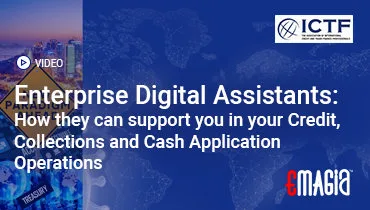Introduction to Comprobantes Fiscales Digitales por Internet (CFDI)
Comprobantes Fiscales Digitales por Internet (CFDI) are digital tax receipts mandated by Mexico’s tax authority (SAT) to formalize commercial transactions electronically. They have become central to Mexico’s fiscal ecosystem, improving compliance, reducing errors, and enhancing transparency in business transactions.
What is a CFDI?
A CFDI is an XML-based electronic document that records transaction details such as goods or services sold, taxes, payment methods, and seller/buyer information. It must be certified by a Proveedor Autorizado de Certificación (PAC) and submitted to the SAT for approval.
The Role of CFDI in Mexico’s Tax System
The CFDI system was implemented to modernize tax administration, ensuring accurate tax collection, reducing fraud, and streamlining accounting processes. For businesses, CFDIs are more than compliance tools; they are essential for operational efficiency and financial integrity.
Types of CFDI
CFDI documents vary depending on the transaction type and purpose. The main types include:
- Factura Electrónica (Electronic Invoice) — Used for goods or services sales.
- Recibo de Nómina (Payroll Receipt) — Registers employee payments and deductions.
- Complemento de Pago (Payment Complement) — Adds payment details to an already issued invoice.
- Recibo de Honorarios (Professional Services Receipt) — For independent service providers.
- Nota de Crédito (Credit Note) — Adjusts amounts invoiced previously.
Structure and Required Elements of a CFDI
A compliant CFDI must include specific elements as required by the SAT:
- RFC of the issuer and receiver
- CFDI type and version
- Invoice date and time
- Unique folio number
- Digital seal and certificate
- Detailed line items
- Tax breakdowns
- Payment method
- Payment terms
CFDI Issuance Process
The CFDI process involves several critical steps:
- Generation: The XML invoice is generated through an accounting system or invoicing software.
- Certification: The invoice is sent to a PAC for timbrado (stamp and approval).
- Submission: The certified CFDI is sent to the SAT for registry.
- Delivery: The approved CFDI is sent to the customer, often via email or a digital portal.
Benefits of Implementing CFDI
CFDI adoption offers many benefits, including:
- Improved Compliance: Ensures alignment with SAT regulations.
- Transparency: Digital traceability of transactions.
- Error Reduction: Automated processes minimize human errors.
- Operational Efficiency: Streamlines billing and accounting tasks.
- Audit Readiness: Facilitates easier and faster audits.
Challenges in Adopting CFDI
Despite the benefits, CFDI implementation can present challenges such as:
- Integration complexity with existing ERP systems
- Training requirements for staff
- Software costs and ongoing maintenance
- Adapting to updates from SAT
- Managing document storage and retrieval
Legal Framework for CFDI
The CFDI system is established under the Mexican Tax Code and is regulated by the SAT. The legal foundation ensures that all businesses issue and preserve electronic invoices for proper tax reporting. The relevant regulations require businesses to adopt certified invoicing software and follow specific technical guidelines set by the SAT.
Key Compliance Requirements
Compliance with CFDI rules is not optional — it is mandatory for businesses operating in Mexico. These requirements include:
- Timbrado: Certification of invoices through an authorized PAC.
- Retention of XML Files: Businesses must securely store CFDI XML files for at least five years.
- Accurate Tax Reporting: Ensuring all tax-related fields are correct.
- Version Adherence: Issuance must comply with the latest CFDI version (currently CFDI 4.0).
- Electronic Signatures: Using valid digital seals and certificates for authenticity.
Technical Validation of CFDI
Before submission to the SAT, a CFDI must undergo rigorous validation checks to ensure compliance. These checks typically include:
- XML structure validation
- Schema compliance according to SAT specifications
- Signature validation to ensure authenticity
- Tax calculations and totals verification
- Folio and UUID validation
CFDI Timbrado Process
The timbrado process is a core part of CFDI compliance. When a CFDI is generated, it is sent to a PAC for:
- Verification: Confirming all required fields are accurate and present.
- Stamping: Adding a digital seal to validate authenticity.
- Registration: Recording the CFDI in the SAT’s database.
CFDI 4.0 Changes and Impact
CFDI 4.0 introduced new mandatory fields, including additional taxpayer details and improved schema requirements. These changes impact compliance, requiring businesses to update systems and retrain staff.
Case Study: CFDI Implementation in a Mid-Sized Enterprise
XYZ S.A. de C.V., a mid-sized manufacturing company in Mexico, transitioned to CFDI in 2019. Challenges included integrating existing ERP systems with PAC APIs, training accounting staff, and ensuring secure document storage. Within six months, the company saw a reduction in tax reporting errors by 90% and a 40% increase in operational efficiency.
Case Study: CFDI Compliance in Large Corporations
ABC Corp., a multinational firm, faced complexity managing CFDI compliance across multiple subsidiaries. Implementing automated CFDI generation and verification tools allowed the company to standardize processes across all units, significantly reducing compliance risk and audit preparation time.
Future Outlook for CFDI Compliance
The SAT continues to enhance the CFDI system to strengthen tax compliance and reduce fraud. Businesses should anticipate future updates such as:
- Real-time validation and submission
- Integration with AI-driven compliance tools
- Greater emphasis on standardized data reporting
- Enhanced digital storage and retrieval systems
Automation in CFDI Issuance
Automation is transforming how businesses handle CFDI issuance. Automated invoicing systems reduce manual errors, speed up processing times, and ensure compliance with SAT requirements. Automation tools can integrate invoice generation, timbrado, validation, and delivery into a seamless workflow.
Benefits of Automating CFDI Processes
- Efficiency Gains: Automation reduces the time to issue CFDI documents.
- Error Reduction: Minimizes human input errors.
- Compliance Assurance: Automation ensures adherence to SAT requirements consistently.
- Cost Savings: Less manual effort results in lower operational costs.
- Real-Time Processing: Immediate invoice generation and certification.
ERP Integration for CFDI Management
Enterprise Resource Planning (ERP) systems can streamline CFDI issuance by integrating with certified PACs and compliance tools. ERP integration ensures that invoice data is accurate, up-to-date, and synchronized with accounting records.
Integration Steps
- Mapping invoice fields in ERP to CFDI XML schema.
- Connecting ERP to a PAC provider.
- Configuring automated validation and timbrado.
- Ensuring secure digital storage of CFDI files.
Error Reduction Strategies in CFDI Issuance
Error reduction is critical for maintaining compliance and avoiding audits. Common strategies include:
- Automated Validation: Checking XML structure before submission.
- Predefined Templates: Using standardized invoice templates reduces input errors.
- Real-Time Feedback: Providing immediate error alerts during invoice creation.
- Regular System Audits: Ensuring ERP and CFDI generation tools remain compliant with SAT updates.
Advanced Compliance Tools for CFDI
Modern software solutions offer advanced tools for CFDI compliance:
- Cloud-Based Invoicing Platforms: Centralize CFDI issuance and storage.
- AI-Powered Validation: Detect anomalies and ensure compliance automatically.
- Audit Logs: Maintain detailed records of CFDI issuance and modifications.
- Integrated Compliance Dashboards: Provide real-time visibility into invoicing operations.
Best Practices in CFDI Implementation
To maximize benefits and maintain compliance, businesses should adopt best practices such as:
- Regularly updating invoicing systems to meet SAT requirements.
- Training employees on CFDI compliance and error prevention.
- Partnering with certified PAC providers for timbrado services.
- Maintaining secure and organized digital archives of CFDI files.
- Implementing robust ERP integrations to streamline processes.
Real-World Example of CFDI Automation
Company LMN integrated its ERP system with a certified PAC provider, automating its CFDI issuance. The result was a 60% reduction in invoice processing time and near elimination of compliance errors. This transformation not only reduced costs but also improved customer satisfaction due to faster invoice delivery.
CFDI Storage and Archiving Strategies
Storing CFDI documents securely and efficiently is a crucial aspect of compliance. Mexican tax law requires that CFDI files be kept for at least five years. This storage must ensure both accessibility and integrity.
Best Practices for CFDI Archiving
- Cloud-Based Storage: Utilize cloud storage with strong security protocols to safeguard CFDI files.
- Automated Filing Systems: Automatically categorize CFDI documents by date, issuer, and transaction type.
- Backup Systems: Maintain multiple backups to prevent data loss.
- Access Control: Implement secure access rights to ensure only authorized personnel can retrieve sensitive data.
Audit Preparation for CFDI Compliance
CFDI compliance audits require organized records and quick access to historical invoices. Businesses should have systems in place that allow auditors to verify:
- CFDI authenticity and validation
- Correctness of tax calculations
- Completeness of supporting documentation
- Timeliness of invoice issuance and submission
Preparing for CFDI Audits
- Ensure all CFDI XML files are stored securely and indexed properly.
- Maintain a record of PAC certifications and timbrado confirmations.
- Regularly reconcile CFDI records with accounting entries.
- Conduct internal reviews before official audits.
Compliance Monitoring and Reporting
Continuous compliance monitoring is vital to avoid penalties and ensure smooth operations. Automated compliance monitoring tools can:
- Track CFDI issuance in real time
- Alert for missing or incorrect data fields
- Generate compliance reports for management review
- Maintain logs for audit purposes
Emerging Trends in CFDI Processing
The world of CFDI is evolving, with technology and regulation shaping its future. Emerging trends include:
- Real-Time Invoicing: Immediate issuance and validation of invoices through cloud platforms.
- Artificial Intelligence: AI-driven validation to detect anomalies before submission.
- Blockchain for Invoicing: Enhancing transparency and security.
- Enhanced API Integrations: Seamless communication between ERP systems, PACs, and the SAT.
Future-Proofing Your CFDI Processes
Businesses must prepare for the future of CFDI by adopting scalable and adaptable solutions. Key strategies include:
- Investing in automated CFDI software
- Regularly updating systems to meet SAT changes
- Training employees on the latest compliance requirements
- Partnering with reliable PAC providers
- Implementing robust data security measures
Innovative Tools for Future CFDI Management
Next-generation tools offer greater efficiency and compliance assurance. These include AI-driven compliance platforms, blockchain-based invoice validation systems, and cloud-based archival solutions with advanced search capabilities.
A Roadmap to CFDI Compliance
Implementing a robust CFDI compliance strategy requires careful planning and phased execution. Here’s a step-by-step roadmap to ensure compliance and operational efficiency:
- Assess Current Processes: Evaluate your existing invoicing systems and compliance gaps.
- Choose the Right CFDI Software: Select a certified PAC provider or invoicing platform with integration capabilities.
- Train Staff: Provide detailed training on CFDI regulations and software usage.
- Integrate Systems: Connect your ERP, accounting, and invoicing systems with PAC services.
- Test and Validate: Run test invoices to ensure compliance with SAT requirements.
- Go Live: Transition fully to automated CFDI issuance.
- Monitor and Improve: Continuously monitor processes, update systems, and adapt to regulatory changes.
International Comparisons of Digital Invoicing Systems
While CFDI is unique to Mexico, many countries have implemented electronic invoicing systems. Comparing these helps understand global best practices:
| Country | System | Key Features | Benefits |
|---|---|---|---|
| Mexico | CFDI | XML format, PAC certification, SAT validation | Strong compliance, audit readiness |
| Brazil | NFe | Real-time validation, standardized XML | Reduced fraud, improved tax collection |
| Italy | FatturaPA | PEPPOL-based, structured XML format | Transparency, reduced errors |
| Chile | Factura Electrónica | Real-time processing, standardized formats | Faster invoicing, compliance |
Implementing CFDI in Your Organization
Successful CFDI implementation requires coordination between finance, IT, and compliance teams. Here’s a guide:
- Set Clear Objectives: Define goals for automation, compliance, and efficiency.
- Select a Vendor: Choose PAC providers or software that meet your needs.
- Plan Integration: Map data flows between ERP, accounting software, and CFDI systems.
- Train Users: Educate staff on CFDI creation, validation, and storage.
- Audit and Adjust: Regularly review compliance and performance.
How Emagia Helps Businesses with CFDI
Emagia provides comprehensive digital invoicing solutions that simplify CFDI compliance for organizations of all sizes. With our advanced automation tools, ERP integration capabilities, and real-time compliance monitoring, businesses can streamline their invoicing processes and minimize errors. Our solutions ensure that you meet SAT requirements while improving operational efficiency and reducing costs.
Key Emagia CFDI Solutions
- Automated CFDI generation and timbrado
- ERP integration with PAC certification
- Real-time compliance monitoring
- Secure cloud storage and retrieval
- Advanced reporting dashboards
FAQs About CFDI
What is CFDI in Mexico?
CFDI stands for Comprobantes Fiscales Digitales por Internet, which are electronic invoices certified by the SAT for tax compliance.
Who must issue CFDI?
All businesses and individuals engaging in taxable activities in Mexico are required to issue CFDI for transactions.
What are the benefits of CFDI?
CFDI improves compliance, reduces errors, increases efficiency, enhances transparency, and simplifies audit preparation.
How long must CFDI files be stored?
CFDI files must be securely stored for a minimum of five years as per SAT regulations.
What is the CFDI timbrado process?
Timbrado is the process of validating and certifying a CFDI through a PAC provider before submission to the SAT.
Final Conclusions
Comprobantes Fiscales Digitales por Internet (CFDI) represent a major step in Mexico’s fiscal modernization. While implementation requires effort, the benefits of automation, compliance, and transparency far outweigh the costs. By adopting robust CFDI solutions, integrating ERP systems, and preparing for future trends, businesses can transform invoicing from a compliance necessity into a strategic advantage.



